Microphone stands: features, varieties, selection and operation

Professional musicians and speakers use microphone stands. Consider their varieties, what to look for when choosing, as well as some of the features of their device.
What is a microphone stand?
A microphone stand is a kind of equipment or device that directly holds the sound device itself during operation. It is necessary so that the person who stands in front of the microphone is more mobile and has more freedom of movement. Microphone stand gives you the opportunity to free your hands during a speech in order to hold a speech, musical instrument or any other object... The stand also ensures that the microphone remains stationary during sound, which is one of the guarantees of high-quality sound.
The extendable tripod stand allows you to adjust the microphone height to suit each speaker. These stands are most commonly used in theaters, concert and conference rooms, recording studios, and other large areas. ...
No public speaking outdoors is complete without microphone stands
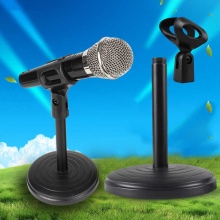

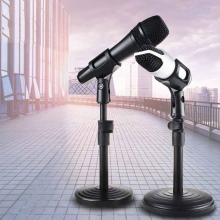
Device and purpose
The simplest microphone stand consists of a mechanical headset (usually a metal tube) on which a fixing device (clamp) and the microphone holder itself are mounted. The clamp is most often made of steel and has a soft protective gasket. The microphone holder is usually plastic, fastened to the thread with a small clamping screw.
Such holders can be used not only for the microphone itself, but also as a stand for a video camera or smartphone. Often they are used as a stand for lamps.

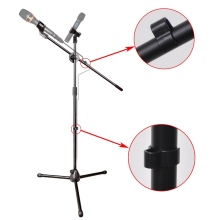
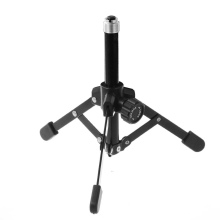
Views
All microphone stands are divided into several basic types.
- Floor straight - they are usually used by singers-vocalists and musicians to enhance the sound of the instrument. Floor-standing microphone holders can be equipped with folding legs. Models that are adjustable in height and angle are quite common. This design is considered universal and is suitable for almost any public speaking. The number and shape of the legs may also vary. The stands can be with three or four round or rectangular legs.
Holders with a flat base of the "plate" type are not uncommon.
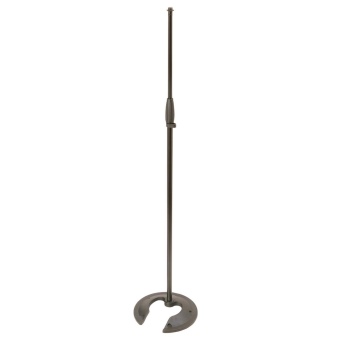
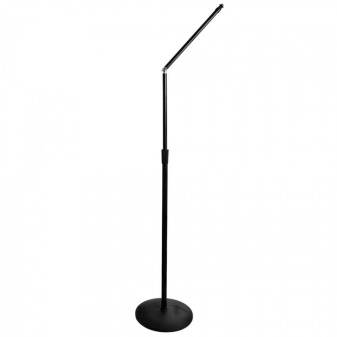
- "Crane". This type of microphone stand also assumes a floor position, but unlike the previous model, in addition to a telescopic telescopic rod, there is a shoulder adjustable in length, directly onto which the sound-amplifying device itself is attached. Such stands are widely used for various musical events.
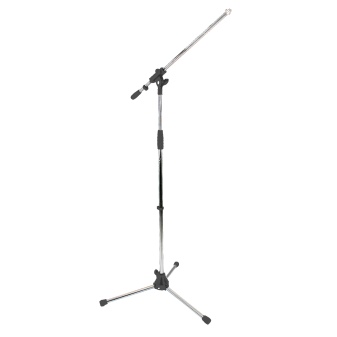
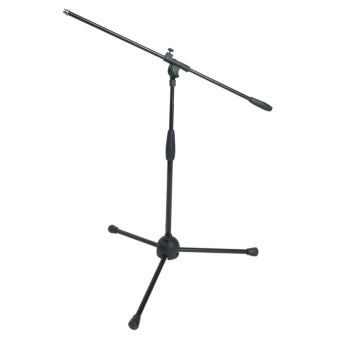
- Tabletop models The holders are small and designed to be placed on a table. Desktop stands can be for one, two or even three microphones. Such models are often found at various press conferences, on the radio and in other places where there are several speakers. One of the rare types of table holders is the "pantograph" design, which is screwed to the table top with screws.
This type is especially suitable for studio use.
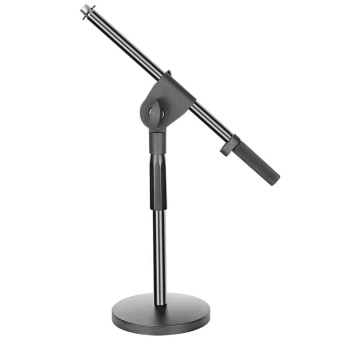

- Are very popular gooseneck models, when the stand is flexible like a hose and can take almost any shape. Such stands are often found at various conferences, seminars, lectures and other public events.
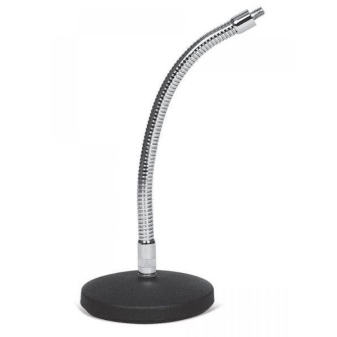

- A special kind of rack - spider holder. It is specially designed for condenser microphones, which are particularly sensitive. The holder got its name due to its external resemblance to an insect - it is a pendant ring with a shock absorber, inside which is the microphone holder itself, pasted over the inner diameter with a thin layer of foam rubber to absorb extraneous noise and prevent vibration.

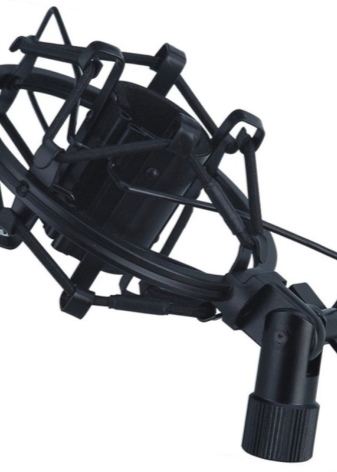
- There are also special holders for musical instruments on sale, shaped clothespinsthat allow you to mount the microphone directly on keyboards, percussion or wind instruments.
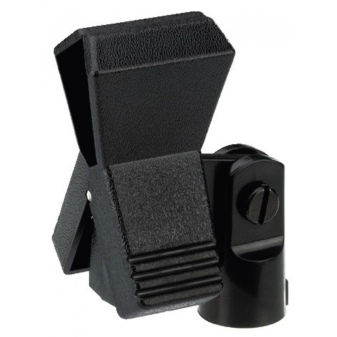

Selection Tips
When choosing a microphone stand, it is recommended to pay attention to some points.
- Adjustability stand height.
- Desirable availability of fixing accessories for installing additional holders, as well as a cover.
- Fixing quality - the sound quality of the microphone depends on their reliability.
- Before buying it is advisable check the maximum load the rack can withstand - the weight of the microphone may be slightly more than it can support.
- The holder should be selected depending on the microphone... So, for a regular microphone, an inexpensive plastic option is quite suitable. For a heavier microphone model, it is recommended to pay attention to shockproof stands. For lavalier microphones, you can choose the type of attachment "clothespin" or "safety pin".
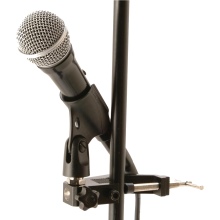
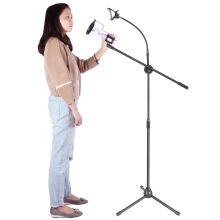

Installation and operation
You don't need any special skills to properly assemble the microphone holder. Assembly instructions are usually included with the equipment. But even if you come across the Chinese version without translation, as a rule, the process of installing the rack is simple. The simplest floor-standing version of a microphone stand consists of a retractable tripod and a stand, which simply need to be inserted into one another and secured with screw bolts. The stand itself can be in the form of legs with plastic tips or in the form of a monolithic circle, most often cast iron. The latter option is usually more expensive, but is considered more stable and therefore more reliable. To absorb vibration, the rack can be equipped with special rubber inserts.
In the construction of the "crane" type, a hinged shoulder with a length of 500-600 mm is added. The more expensive the model, the more reliable the hinge mechanism is.... Depending on the model, the height of the rack can vary from 200 mm to 1500 mm. The rack itself is usually made of steel or aluminum. Desktop microphone stands, depending on the design, can be equipped with a bracket for attaching to a tabletop or a tripod.
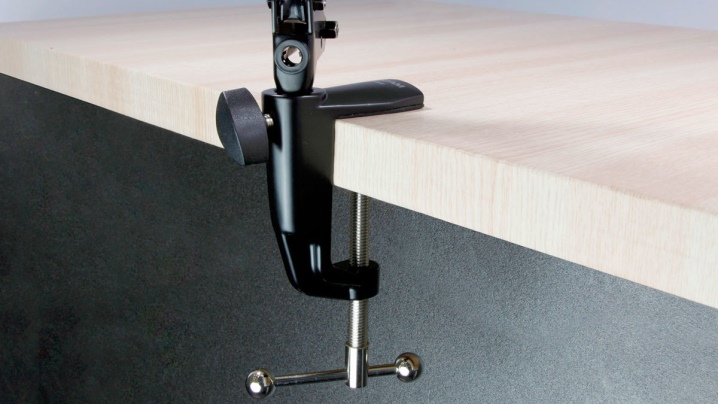
The best models come with additional accessories. The most popular are these.
- IPad Mount Adapter is a nice addition for musicians who specialize in virtual music.
- Side crane allows you to attach two microphones at the same time - for the performer's voice and for his musical instrument.
- Headphone holder - with him this accessory will always be at hand.
- Drink stand - this nice addition is commonly used in home and professional recording studios.
- Sound-absorbing pads for the legs of the rack. The simplest of these are regular pieces of foam that are worn on a tripod to prevent vibration.

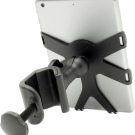
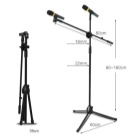
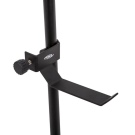
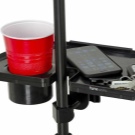
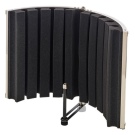
See below for how to choose a microphone stand.













The comment was sent successfully.